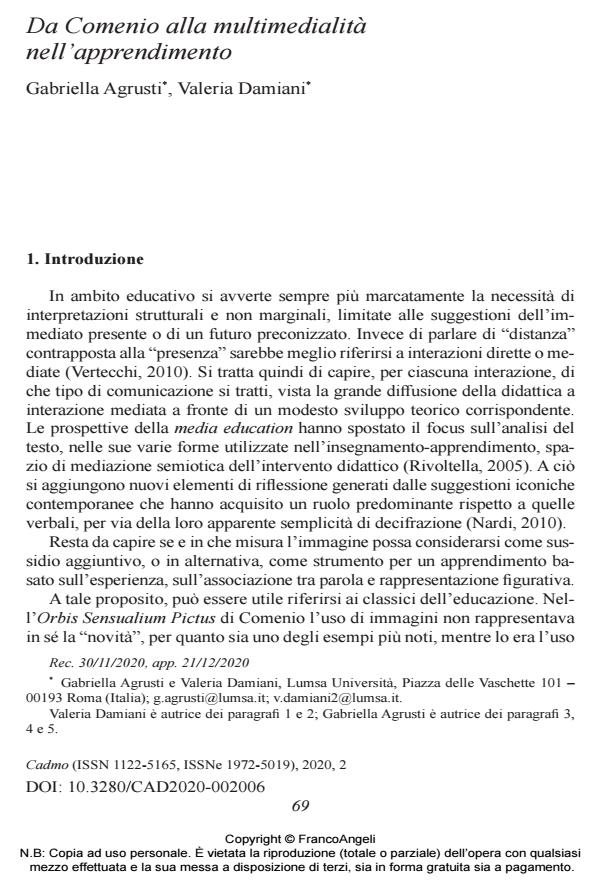From Comenius to multimedia learning
Journal title CADMO
Author/s Gabriella Agrusti, Valeria Damiani
Publishing Year 2020 Issue 2020/2
Language Italian Pages 13 P. 69-81 File size 217 KB
DOI 10.3280/CAD2020-002006
DOI is like a bar code for intellectual property: to have more infomation
click here
Below, you can see the article first page
If you want to buy this article in PDF format, you can do it, following the instructions to buy download credits

FrancoAngeli is member of Publishers International Linking Association, Inc (PILA), a not-for-profit association which run the CrossRef service enabling links to and from online scholarly content.
In Education, there is a growing need to shift the focus of research from short-term and distance-oriented relations to long-term and moderated/medi¬ated interactions. In the field of Media Education, studies have stressed the relevance of text analysis as a semiotic mediator in the teaching and learning process. This paper examines the relation between images and learning and therefore between words/texts and their iconic representation through the Orbis Pictus" by Comenius and later studies by R. Mayer on multimedia learning. The idea of combining words and images was for the first time methodologically conceptualized by the work by Comenius who linked the teaching to real and perceivable experience in order to improve understand¬ing and therefore learning. Mayer’s theory, in developing the principles for reducing the incidence of extraneous processes on memory workload in mul¬timedia learning, offers possible models for structuring knowledge where images and texts are key elements for instruction. Conclusions stress the role of images that, rather than a simple support in the learning process, have rel¬evance as structural features for teaching and learning interactions. .
Keywords: Comenius, Mayer, multimedia learning, image, text, media edu¬cation
Gabriella Agrusti, Valeria Damiani, Da Comenio alla multimedialità nell’apprendimento in "CADMO" 2/2020, pp 69-81, DOI: 10.3280/CAD2020-002006